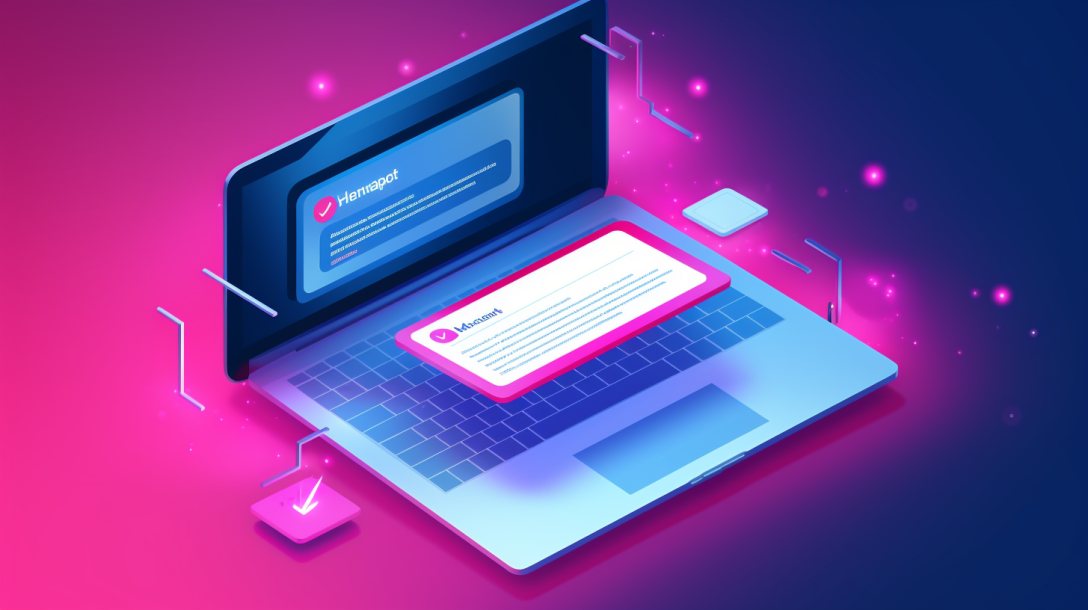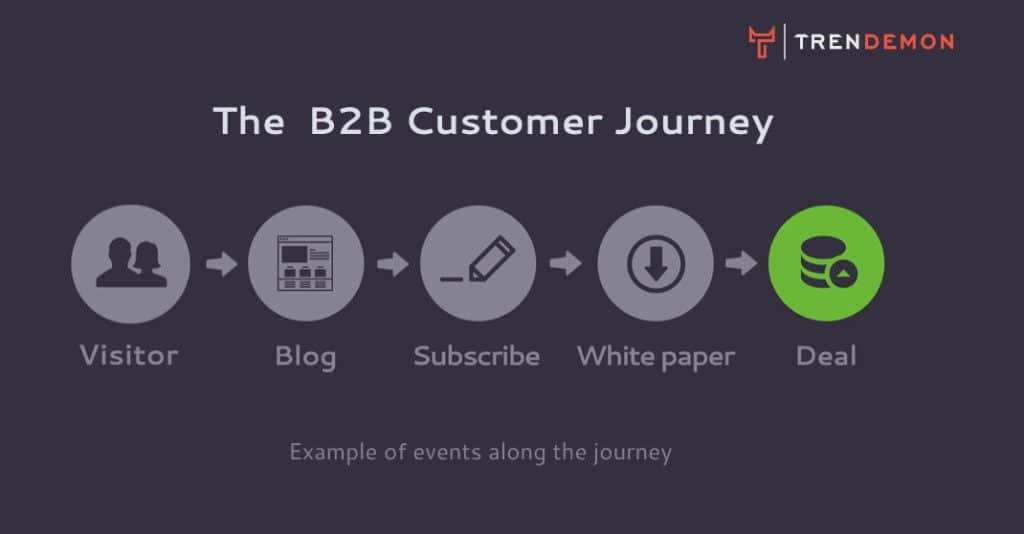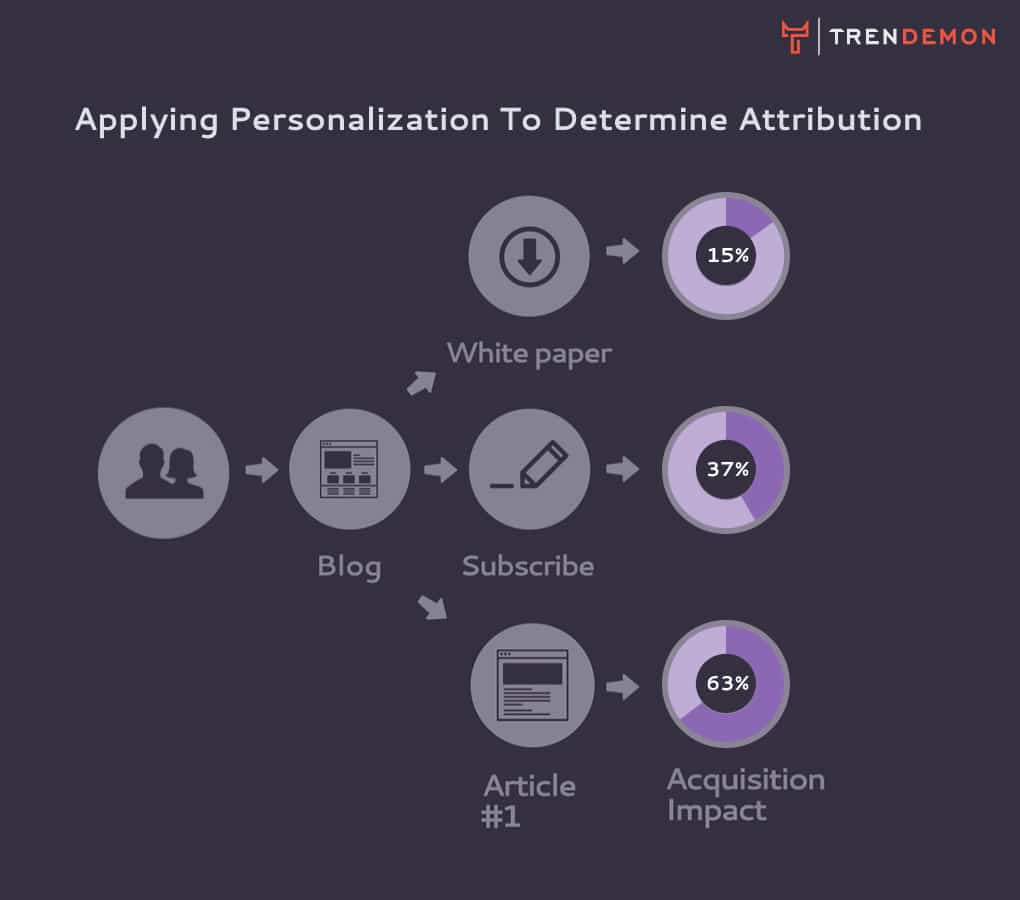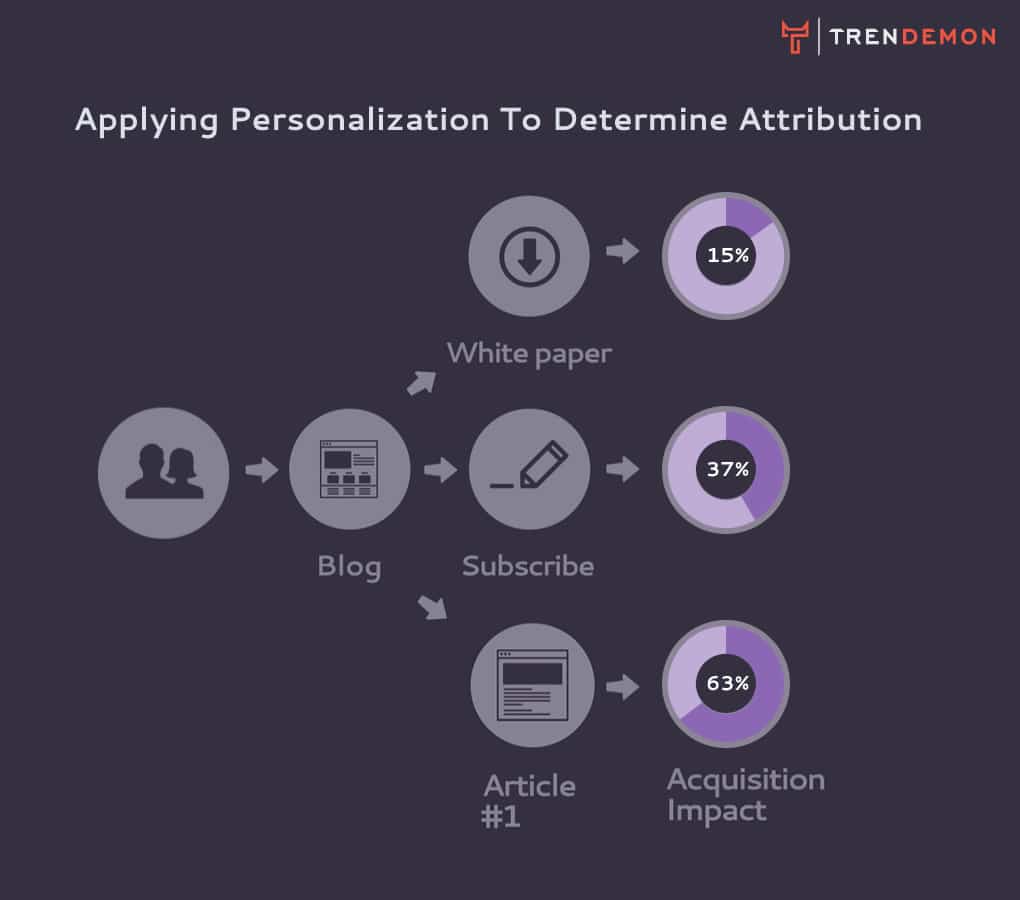How Real Time Personalization Can Also Help Understand Which Events Impact Your Customer Journey

Two important topics B2B marketers face today are multi touch attribution and real time personalization. On the surface it would seem that these two are only loosely connected. Attribution is aimed at figuring out the impact of different sources, channels, events or assets on a given outcome or revenue while personalization is aimed at optimizing the user journey towards a desired goal or experience.
In the following post we’ll try to show how these topics are more closely related and synergistic than we might think. The reason that this connection is due to its impact on the company’s growth. We’ll discusses how real time personalization not only improves website conversion rates but also how it reveals deeper insights regarding the true influence of online events on the customer journey. Take an Advil and a big breath, this ain’t for the faint of heart…
B2B Marketing Physics 101
When I made the transition from B2C to B2B marketing a few years back, I learnt the hard way that the B2B marketing obeys a different set rules than B2C. In many respects, it’s the exact opposite. While in the B2C world you seek the immediate conversion, B2B is about finding long term alignment. B2B, especially SaaS, has more emphasis on creating a dialog than about advertising, serving than selling. This is not just some cheesy distinction aimed at making B2B marketing appear loftier or more “intellectual” than B2C. Because of this fundamentally different physics, B2B companies need to adopt a different set of tools and methodologies.
The Real Challenge – Aligning Marketing & Sales
Due to a longer customer journeys across multiple touch points and devices, the biggest challenges B2B marketers face (and the main challenge we focus on solving here at TrenDemon), is understanding and aligning marketing efforts with sales and revenue. To create this alignment we first need to understand which of our actions, events and assets affected the customer decision to move further in the process. How do you attribute the impact of a blog post, an event and a white paper download to the deal closed months down the line? How do you divide up the value of a successful deal between them?

Attribution – Still More Art Than Science
In order to understand which events or content pieces actually influence users to move further in the journey, we need to attribute the value of the outcome between the various touch points. This allocation is usually done with pre-defined formulas or models. The most common place marketers practice attribution is in sources attribution. In this aspect, marketers apply different models to help the better understand the value of different traffic sources in a multi-touch journey, (for a deep dive on attribution models, see this great article by Avinash). Similarly, in event attribution we are also looking to allocate the value between different events in the online journey. Before we address event attribution, we first need to confront a deeper issue which affects all aspects of marketing attribution:
Attribution is “the action of regarding something as being caused by a person or thing.” (wikipedia). ‘Caused’ is highlighted because it is the biggest caveat in today’s attribution methodologies. The problem is that most of the time when you hear talks about attribution, what they are actually talking about establishing a correlation between certain events or sources and certain goals. But establishing a correlation, doesn’t prove a causal relationship between them, so not real attribution. What marketers really need are insights as to the causes which drove their customers’ decisions.

Is your attribution more correlation than causation?
How Leveraging Real Time Personalization Can Help Prove Causation?
Finding causality is critical for growth but in order to verify that type of connection, we need an experimentation tool. This is where Real Time Personalization comes into play. Real time personalization can serve as great experimentation platform since it allows us to test for causality between similar groups of people, at scale. It also helps generate data on events and content that otherwise would have been in the dark. Before we dive deeper into how we can use personalization for attribution, let’s go over some basic principles:
What is Real Time Personalization, Really?
In our context of B2B marketing, real time personalization (or dynamic personalization) is the technological capability of an online asset (usually a website or app) to display different content to different users based on a predefined set of rules or algorithms. The aim of personalization is to provide a better user experience, higher engagement, improve conversion rates or move the user further in the journey towards a deeper stage. For you demand generation people out there, think of it like in-site retargeting (very effective just without the creepiness of ad retargeting).
The two main questions that any personalization system needs to be able to answer are:
who is the individual currently viewing the page?
what should be presented to that individual in order to improve outcomes?

Who is viewing the page?
To answer this and build the user’s profile or persona, the system can rely on a range of data sources. For example, the history of pages that user has already visited on the site, referring website, geo (ip), cookie, events which happened earlier in the user journey, or information from the company’s marketing automation service or a CRM. One big headache in this part is tracking users across devices. This means the ability to determine that a visitor from a desktop computer at his office and a mobile user a few weeks later are actually the same person.
What should be presented to them?
After the system determined who is viewing the page, it now needs to decide what to present to them (for example, which content to recommend or call to actions to show). The mechanism which decides what to show, can have a varying level of complexity or sophistication. In content recommendations for example, a basic level of personalization can be to simply not show the visitor an article or post which they have already read. In call to actions (CTA) it is not showing a CTA that the user has already completed. But if we are looking to fulfill the potential of personalization to accelerate growth, we need more intelligent personalization mechanisms.
Getting Back on Track – How Attribution and Personalization Amplify Each Other
Let’s assume that our ‘attribution’ model found a correlation between a given event and a certain outcome. To make things more tangible, let’s take an example of downloading a white paper and reaching the MQL stage. Even if we found a correlation between people that downloaded that paper and people that later became MQLs, as discussed above, it doesn’t prove that downloading that paper influenced people to later become MQLs. Now, with personalization, we can run an experiment to test whether when similar groups of people are shown this white paper and download it, it impacts their chances to move further down the funnel. This is a continuous process of gathering data, finding correlations and testing for causation, rinse and repeat.

Now that we have the major building blocks covered, let’s see how they fit into a cyclic process, our feedback loop:
The first part is collecting and correlating data about the journeys relative to the outcomes. Here we want to make sure we are tracking the entire customer journey and mapping as many touch points as possible. The outcome is an understanding of the relations between certain events and outcomes (correlation).
Then comes experimentation. We use the initial correlation data to build experiments which we can use personalization to execute on site (testing different content or call-to-actions to visitors who share a similar persona and stage on the journey). The outcome here is attribution, so the ability to state the causal relationship between certain events to outcomes.
The third part is acting on those insights to accelerate growth. Also here personalization can contribute as a tool to improve the customer journey in real-time based on the attribution insights we’ve collected.

Key Takeaways
- Track Journeys, not just conversions. This is the first place things break down. Make sure you’re collecting and structuring the data in a meaningful way to avoid GIGO. For more on that, check out our piece on Data Capital in B2B marketing.
- Be intellectually honest if you’re doing attribution or merely establishing correlation. Use continuous experimentation to test for causation.
- If you are not already doing so, deploy some personalization framework (build your own, use ours or other tools, but please do something. Treating all of your visitors the same way is just wasting good data…) that will allow testing different messages to different audiences. Some immediate benefits right off the bat would be dramatically improving your website’s conversion rates and lead quality.